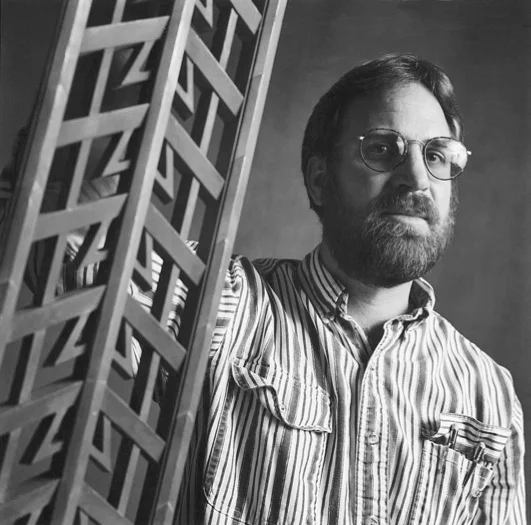Richard Baird gave a lecture on the past and modern uses of aluminum in ornamental and structural metalwork at the Massachusetts Institute of Technology in March 2018. This is the first in a series of three articles covering the lecture.
Richard Baird, the president of Historical Arts & Casting, has always been good with his hands. The son of an architect, he spent most of his summers from an early age helping his father with restoration surveys of old cast iron buildings. At fifteen years old, he purchased a badly mistreated 1963 Volkswagen Beetle and began to rebuild it. Less than a year later, it was drivable.
At the time, the car craze was to rebuild Beetles as “Baja bugs,” faster-running, off-road versions of the car. Richard had a group of friends who all had Bugs, and he was determined to make his the coolest and fastest. He would choose a bigger faster engine than any of his friends, something nobody thought he could manage - other than his parents. However, he ran into a roadblock when he noticed that the conventional materials he was using to build his Baja bug were making his design exceptionally heavy. With the addition of a larger engine, the weight of the car would simply be too much.
Richard’s first exposure to the benefits of aluminum came from his father, Steven T. Baird. He was working on a project that required him to work with a team of metal fabricators, and they had been discussing the advantages of aluminum on his project. Steven told Richard that whatever steel he was using, if he could change that material to aluminum, it would cut the weight added to his car down by two thirds. Inspired by the idea, Richard found a Buick V6 aluminum block engine. He used aluminum mag wheels instead of the old steel wheels, he made the firewall between the engine and the driver in aluminum. He remade the floor panels and as many other body parts as he could, even the seat sub-frames were aluminum by the time he was finished. Just before his 19th birthday, Richard had completed his Baja bug after three years of work.
The project sparked a lasting interest in metals for Richard. After high school, he studied architecture like his father, and worked for nine years at his father’s firm, mostly doing restoration work. In 1972, Steven T. Baird got a façade restoration project that required him to research old methods of creating and assembling architectural cast iron. The project was highly successful as a result of this traditional way of recreating the façade, and the world began to regain interest in metalwork.
In 1982, Richard and two of his brothers branched off of their father’s company and created Historical Arts & Casting, Inc. to meet the growing demand for high-quality metalwork. In the years since the company was incorporated, HACI has designed, manufactured, and installed fine custom metalwork all over the country, and at times overseas. Richard and his brothers’ enduring passion for metalwork, in addition to their team of artisan craftsmen, has resulted in more than 30 years of consistently excellent quality from Historical Arts & Casting, Inc.


